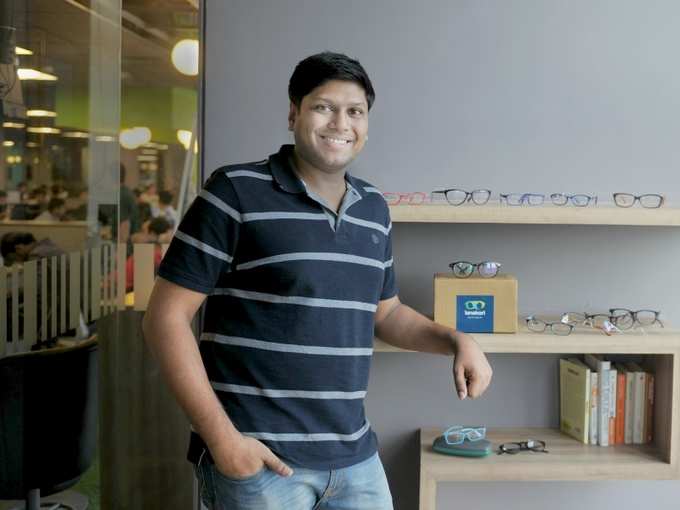
Peyush Bansal reminds you of Suicide Squad’s Deadshot. He is not a killer, but has built a killer business from scratch.

As some e-commerce biggies struggle with lower valuations, this
Growing at a solid 125%, the idea is to charge forward, hard and strong. They even developed a light-weight eye-testing equipment that can survive a drop from the 20th floor.
Business Insider chatted up with Peyush to understand what he’s been up to.
At a time when business is moving offline to online, you’ve done the reverse.
It’s not a question of online or offline. You can do it either way.
Just reach out to your consumers to know what they like and don’t like about you. Our consumers prefer to try before they buy, and so we created a click-and-mortar store model. That’s the idea.
But offline is way more asset-heavy…
Every medium has its own pros and cons. It all depends on the vision of the company.
If your vision is half-a-billion Indians to wear you, you can’t work on those notions. If people want to consume your product, I don’t think any medium is expensive. The problem kicks in when you aren’t selling enough, that too at a discounted price.
Why scale your home service programme in a country that has so many logistic loop-holes?
Just because
Think of Doctor Lal’s Path Labs. It’s very successful in the home-service business. It’s all about what and how you are providing the service to make it accessible. For millions of Indians to wear specs, 2000 stores, a mobile app and a mobile website aren’t enough. The home service programme helps us take our service to tier II and tier III cities without the hassles of buying property.
Think of an Uber or Ola. They have scaled fantastically just because of this. The idea is to build that kind of accessibility.
How much money has gone into developing your new eye-testing equipment?
It’s taken months of R&D and at least a million dollars. The equipment is placed in an unbreakable, waterproof case that allows the optician to travel whatever the weather conditions.
What are your targets like for the year?
We are looking to treat at least 10,000 eyes every day. That’s 2 million every year. We are operationally profitable. We’ll be net profitable in mid-2017.